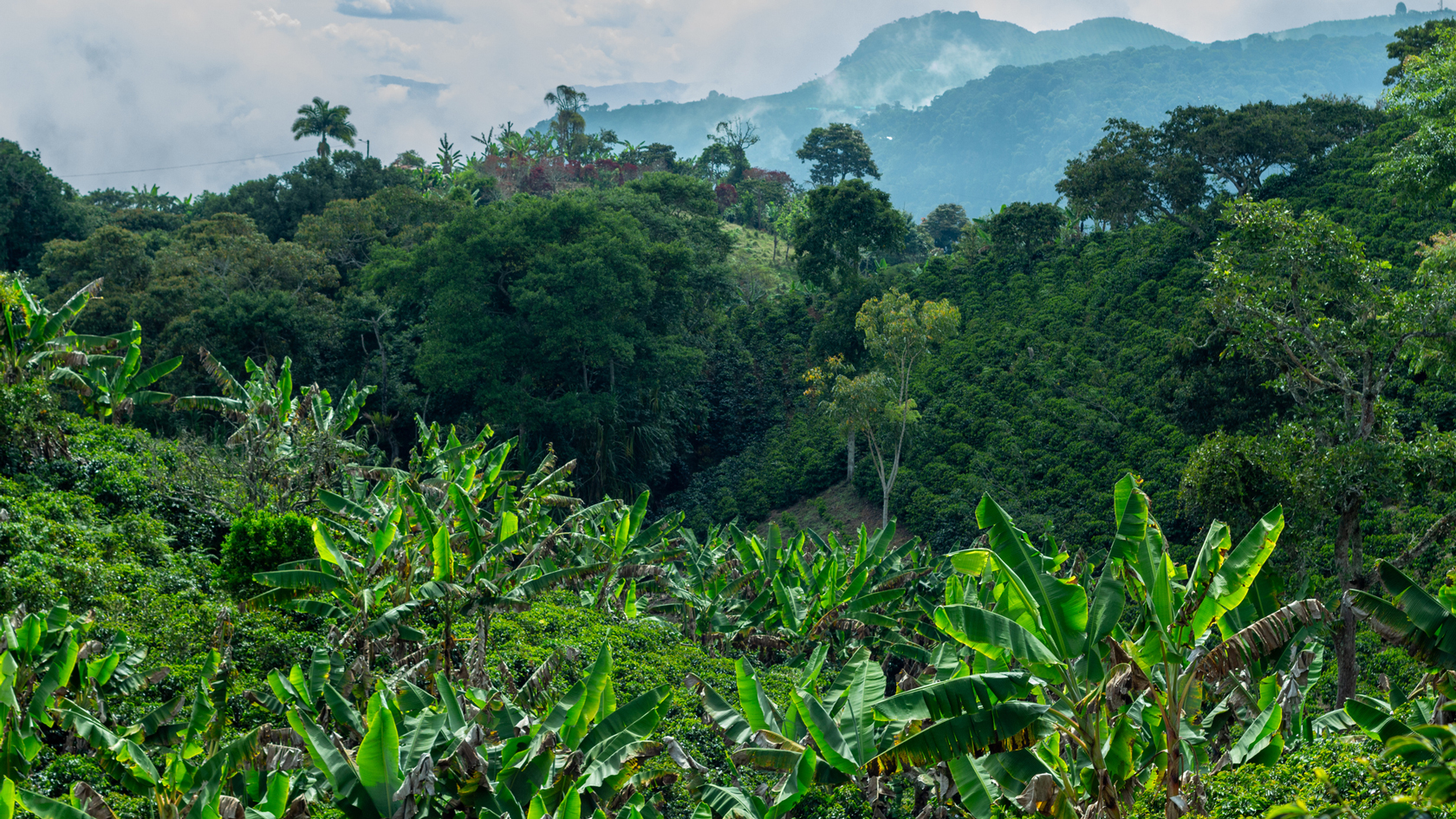Coffee in the Shade
Farming coffee can be both ecological and profitable at the same time, according to the research of Earth system scientist Maria J. Santos. The key is to combine the crops with trees.

Ah, the scent of fresh coffee. Like many people the world over, Maria J. Santos is a big fan of the aromatic black brew. It is only fitting, then, that the professor of Earth system science gets to study how coffee beans are cultivated. One of the topics she explores in her socio-ecological research concerns agroforestry, a traditional and multi-faceted land use system that combines trees with various agricultural crops. “The principle of agroforestry is widespread and has been around for a very long time,” Santos says, citing the centuries-old tradition of cork oak forestry in her native Portugal, where sheep or goats graze in the shade of the oak trees, extending the trees’ agricultural use. In the case of coffee, shade could be provided by towering banana plants and other tropical trees that are interplanted with coffee plants, or farmers could grow coffee beans in the shade already provided by tree canopies.
Sun-exposed monocultures
The trees protect the coffee and improve the microclimate as well as the coffee farmers’ livelihoods. “The environmental benefits of agroforestry systems are well documented,” says Santos, who is also co-director of the University Research Priority Program (URPP) Global Change and Biodiversity. The mixed farming practice increases biodiversity and carbon storage, makes crops more resilient to pests and requires less fertilization, to name but a few of the benefits. Given all these advantages, you’d think coffee farmers in tropical regions would embrace the system with open arms.
And yet, many farmers still opt for monocultures. According to Santos, less than one-quarter of the world’s coffee plantations are based on the “shady” practice, most of which are run by subsistence farmers growing high-quality Arabica coffee on small plots of between one to two hectares. A much larger share of plantations, around 40 percent, are vast, sun-exposed monocultures, often of the less-demanding Robusta varieties. The remaining one-third of coffee plantations lie somewhere between these two crop systems, explains Santos.
Fewer chemicals, more profit
One of the reasons for this is crop yield. In relation to area, crop yield is a bit lower for shaded coffee plantations, partly because the plants are more spread out than in other systems, but also because they produce slightly fewer coffee beans. And their cultivation requires more manual labor.
Nevertheless, emphasizes Santos, agroforests are more profitable overall, especially when taking into account the benefits for biodiversity and the ecosystem. She adds that they require less fertilizer and fewer pesticides, and that the higher-quality beans fetch a better price on the market, making them more profitable for farmers. “For farmers, the shift to shade-grown coffee pays off,” says the Earth systems professor. The payoffs, she adds, are twofold, benefiting the environment as well as the farmers. In addition, by switching to mixed crop cultures, farming families can also better brace themselves against unpredictable market developments.

The quality of ecosystems has improved greatly thanks to agroforestry.
One of the interesting regions Maria Santos studies is Colombia, which is the third-largest coffee producer in the world, with almost a million tons per year. The country and its small-scale farmers, or campesinos, have been producing coffee for centuries, and originally did so in shaded agroforests. In the 1970s, they systematically ramped up their cultivation methods and switched to intense, sun-exposed cultures. Some regions, including Risaralda, have now returned to the original method. This presented an excellent opportunity to conduct some research and measure changes in the ecology, including carbon content in the soil, biodiversity, coffee quality and erosion, over the past 40 years. “We wanted to know if and how much of the ecosystem and its ‘services’ can be preserved alongside coffee cultivation.” The study’s in-depth analyses, which included the use of satellite data to trace the spatial distribution of the tree population, offer an overwhelmingly positive conclusion: “Thanks to agroforestry, the quality of the ecosystems has recovered quickly and improved greatly,” says Santos. A crucial factor in this recovery were the trees that had been planted on the plantations and which provide shade while boosting biodiversity.
Sustainable coffee farming is set to play a more prominent role in the future. The EU has passed a law banning imports of coffee, cocoa and other products that are linked to deforestation. The aim is to protect forests from the ever-expanding farming industry. From the end of 2024, Swiss coffee importers will also have to show that their imports are sourced from a region that was unforested before 2020 or from other sustainable agroforestry systems. Maria Santos welcomes this step and the monitoring that comes with it, as it will likely give sustainable production practices an additional boost. As a coffee lover, she is more than happy to pay the price that comes with sustainable, shade-grown coffee production.